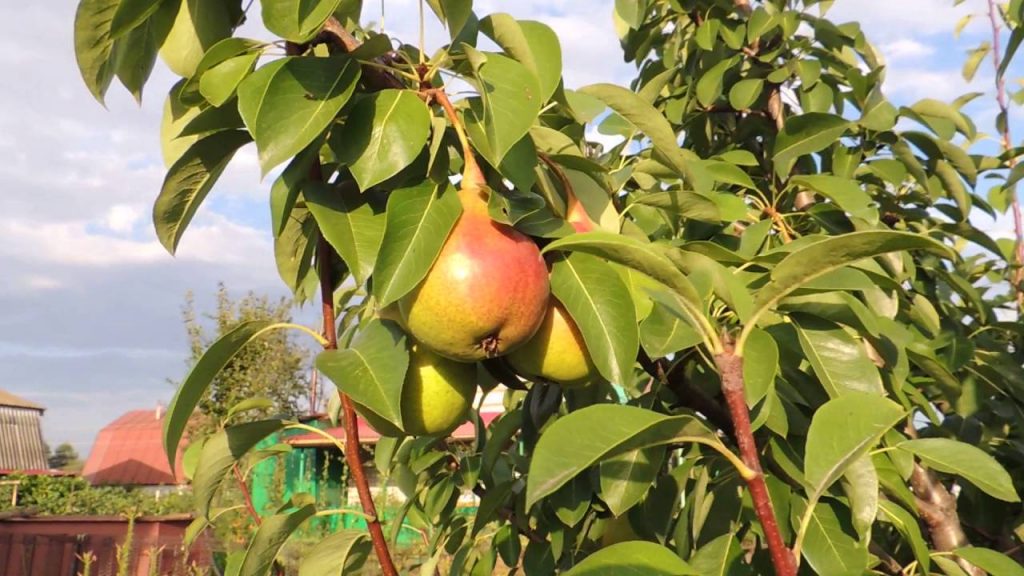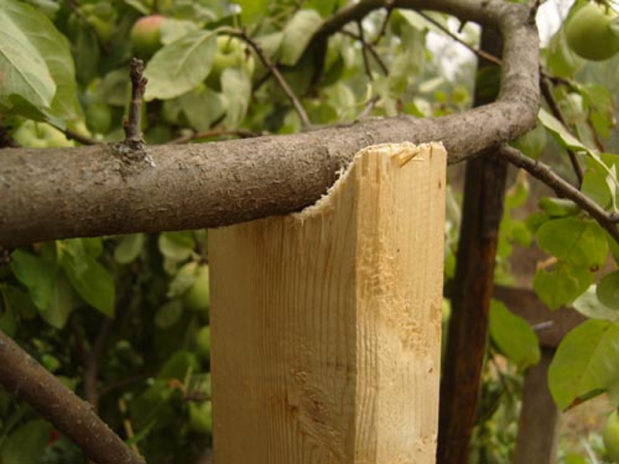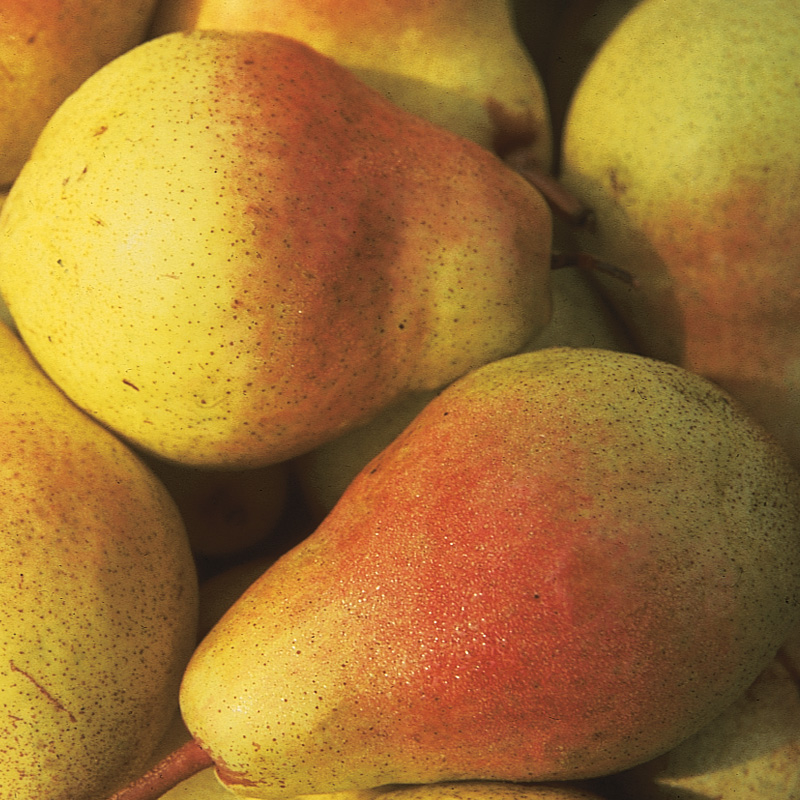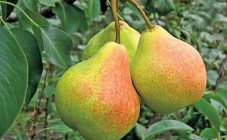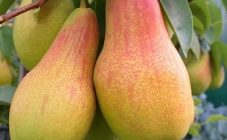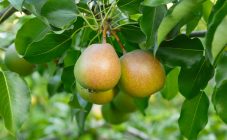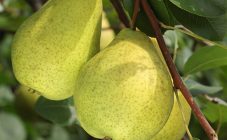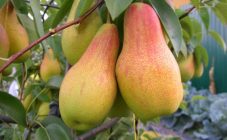Content:
In large estates and in small areas, there is always room for a pear tree. Together with the apple tree, they provide the gardener with a tasty harvest. Summer varieties of pears are not stored for a long time, but they have a very juicy pulp. Candied fruits, dried fruits and jams are often prepared from them. Most often, these fruits are consumed fresh.
General information
The old variety, the Lyubimitsa Klappa pear, is very popular among summer representatives. In the original, it is called Clapp`s Favorite, which is translated as Clapp's Favorite.
The variety was created approximately in the middle of the 19th century on the American continent. Its author is considered to be the breeder Thomas Clapp. Initially, this pear was distributed only in the New World. Now it is most often grown in areas with mild winters, since frosts below -30 ° C damage the branches, and the tree then takes a long time to recover.
Characteristics and description of the pear Favorite Klapp
To understand whether this variety is suitable for growing in a particular garden, you need to familiarize yourself with its characteristics:
- Fruit size. All pears on the tree are medium or above medium size when ripe. Fruit weight is about 200 grams. There are also giants over 300 grams.
- Taste. The pulp of a ripe pear is very juicy and white. The taste is sweet, with a subtle sourness. The aroma can be described as delicate pear. Experts estimate it at 4.8 points out of 5 possible.
- Fruit shape and color. Pears have the usual shape for this culture in the lower part, more rounded and tapering towards the top. They are not very elongated in length. When fully ripe, yellow-green fruits have a juicy yellow color with a red barrel.
- Skin. The fruit is covered with a thin, smooth skin. Its surface is not even, but slightly bumpy.
- Ripening period. The first ripe fruits can be removed from the tree at the end of July. The tree gives the entire harvest within a week.
- Productivity. From an adult tree, you can collect up to 50 kg of ripe fruits.
As for the early maturity, the harvest will have to wait for a long time: only in the seventh year after planting.
- Self-infertility. The variety should be pollinated by other trees. It is believed that apple trees can be a pollinator for pears. The best pollinator for this pear variety is Forest Beauty or Williams.
- The size of a mature tree depends on the growing conditions. Under favorable conditions, this will be a tree about 5 meters high.
- Frost resistance. With frosts below -30-35 ° С, trees are severely damaged.
- Drought resistance. In very dry summers, the tree must be watered once every two weeks to form a crop.
Low resistance to scab disease is a disadvantage of the variety, but this trouble can be stopped by prevention. Once a month, starting in March or April, depending on weather conditions, the tree is treated with Abiga-peak. This varietal trait of the Clappa pear is considered a disadvantage, but it is fully compensated by the taste of the fruit.
Growing conditions
Landing is carried out in a sunny location, preferably protected from drafts. The tree takes root well on the southern or southwestern slopes.
In order for the favorite Klappa pear to please with the harvest, you need to familiarize yourself with the description of the features of its cultivation:
- Watering mode. Watering is necessary abundantly, but not often. The root system of a pear lies about a meter deep, and water must saturate the soil to moisten the roots. After the pears have reached their final size, they begin to gain juices. During filling, it is advisable to stop watering so that the fruits are not watery. The sun they absorb will add sweetness and aroma to the pears.
- The soil suitable for growing is created independently from garden soil, humus and sand, which are mixed in a 1: 2: 1 ratio. A prolonged-release fertilizer such as AVA is also added.
- Top dressing. The first feeding is carried out during planting, therefore, in the first year of life, you do not need to fertilize with anything else. In subsequent years, the first feeding is carried out with organic fertilizer (rotted manure, mullein solution 1: 5 or chicken droppings soaked in 10 parts of water). The following dressings are carried out once a month with a full mineral fertilizer with trace elements. Favorite Klappa loves phosphate-potassium fertilizers such as Fertik or from the Buiski series.
- Pruning. The pear shape begins to be created from the second year after planting. The type of trimming depends on the end goal. Sanitary pruning is done in early spring before sap flow begins. With this pruning, the branches that grow down or inside the tree are cut. These extra branches interfere with normal development. To create a neat crown, formative pruning is performed, which involves pruning young shoots.
- Treating diseases and pests completes the tree care. Of the pests, the most annoying pear is aphids, which in large numbers settle at the ends of young twigs. Against this scourge, drugs Alatar or Iskra gold show themselves well. A complex of diseases is prevented by treatment with Abiga-peak or a solution of copper sulfate.
When choosing a spraying option, it is necessary to remember the main rule of the gardener - it is better to prevent disease than to cure. Preventive measures do not require much effort, but allow the gardener not to worry about the harvest.
It is impossible not to love these delicious juicy and sweet pears. Breeders call the Klappa pear variety the queen of summer pears. Both experienced and novice gardeners are advised to pay attention to this variety.
